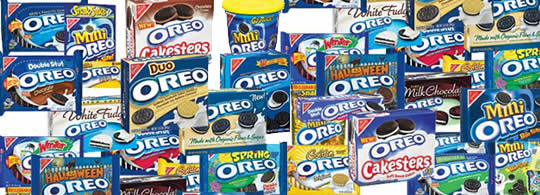Cut Products, Boost Sales
I’ve written about some of the research that shows that shoppers don’t always respond positively to a bigger selection of products (see More Choices, Fewer Sales) and extreme product/brand proliferation (see Mega-Branding: The Purple Oreo Problem). Now, retailers are implementing the concept of reducing selection in their stores and finding that it can indeed increase sales.
[Wal-Mart] dropped two of its five lines of peanut butter to free up scarce shelf space for cinnamon spreads. But the decision didn’t cost the retailer a single jar in sales. With fewer selections to browse, customers wound up purchasing more than before…
P&G, maker of Tide detergent and Ivory soap, recently reduced the number of its soap and other skin care offerings by about one-third at one retailer, while cutting the array of detergents and other fabric care products by about 20 per cent at another chain.
Following the cutbacks, sales grew in each category. “In the skin care example, shoppers reported they felt that they had more choices because the selection on the shelf was clearer,” spokeswoman Jennifer Chelune said. [From The Globe and Mail – In store aisles, less is more but customers can still be particular by Marina Strauss.]
Of course, slashing selection isn’t a panacea. Sometimes, low volume products have devoted followers. Strauss reports that supermarket chain Loblaw ended up reinstating many products it cut after customers complained. Wal-Mart, too, restocked items when they found customers were going to other stores to purchase them. And in one project a store found that increasing the selection of yogurt boosted sales.
Still, this trend could spell doom for Purple Oreos. Will they be missed?

